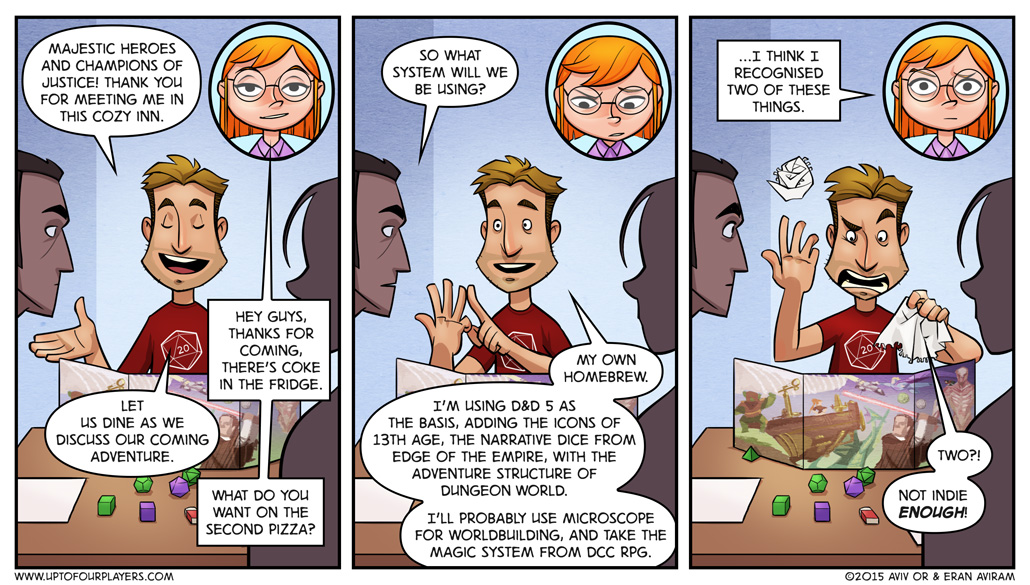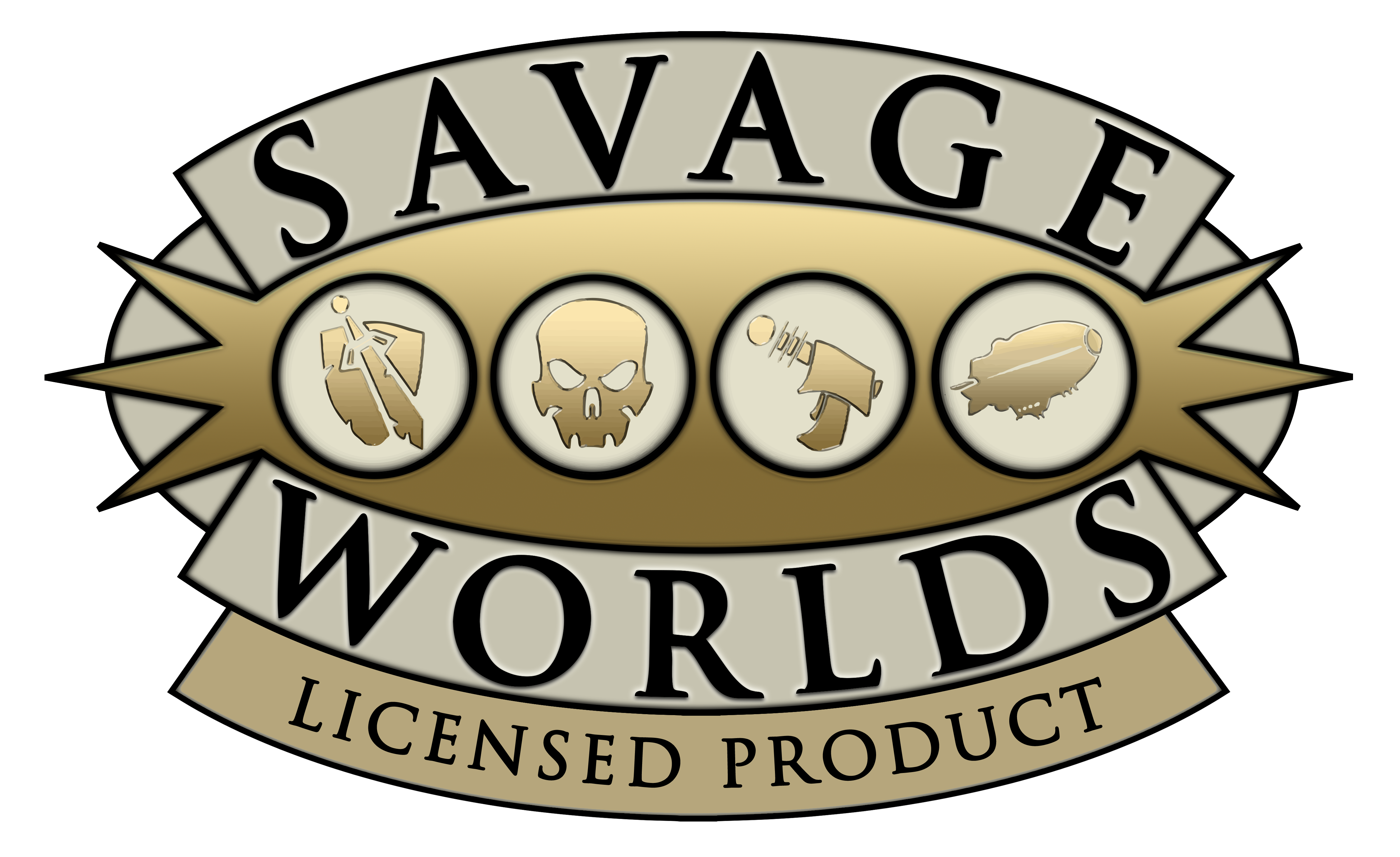I think the system Nadav suggests might be viable.
- D&D 5 is a smooth, open system, with only a few major rules, so it’s easy to add your own. It’s a good basis for adjustments.
- The icons of 13th Age are an excellent macro-storytelling tool. They connect the player characters to the world, allowing the game to develop around them, giving the GM a great reason to hand out stuff, when stuff needs to be handed out.
- The dice of Edge of the Empire are a great micro-storytelling tool. You just roll them, and you get a mini-narrative, since they don’t only tell you how much you’ve succeeded (or failed) but also if something positive or negative happened, to be interpreted based on the situation and rules.
- Dungeon World‘s Fronts are an adventure structure, giving you directions and possible destinations, a solid basis for improvising, which really suits the interactive environment of roleplaying games.
- Microscope is a fun, simple storytelling game, that can easily be used to develop a setting in a collaborative way, players and GM together, ensuring you get a world that’s interesting for everyone. I’ve written more about collaborative world building in Hebrew, here.
- Finally, Dungeon Crawl Classics‘ magic system inserts a random, and, well, magical feel to the way spells and divine intervention work, making them unpredictable, dangerous and sometimes corrupting.
Each of these is a great tool in any roleplayer’s arsenal. I’m not sure using ALL of these ingredients combined gives you an edible cake, but Nadav is the type of gamer who’s more than willing to try – and playtest on his friends.
If you don’t recognize any of these – except for D&D, everyone knows D&D – then I hope the joke worked even better, and also, might I recommend you try them out! Maybe there’s a convention somewhere around you?




